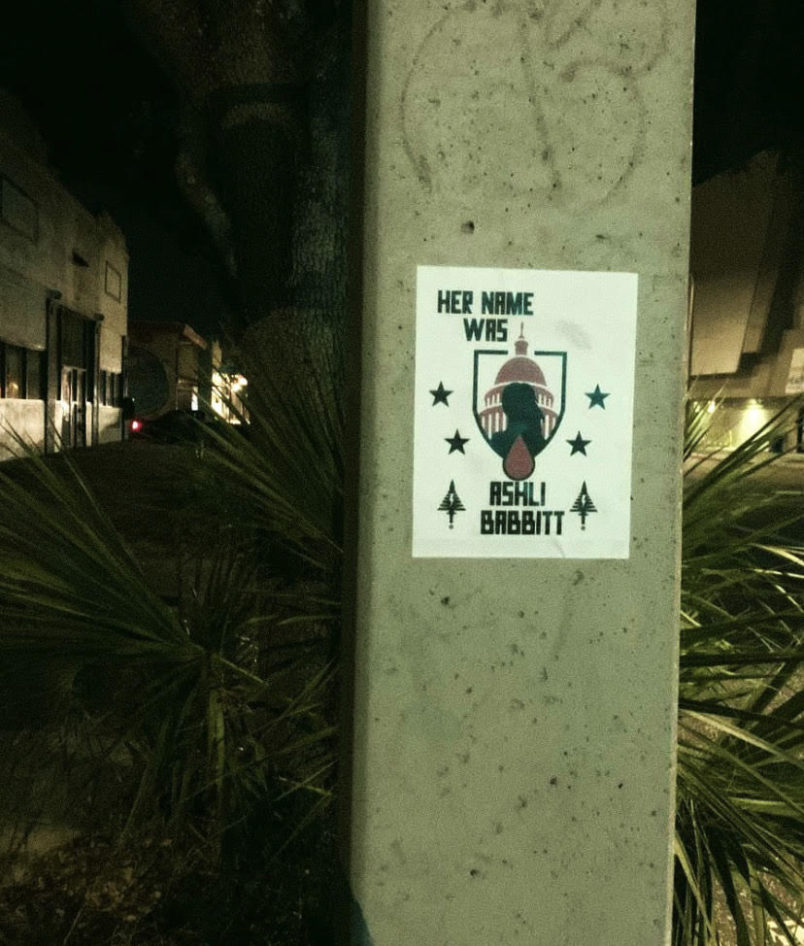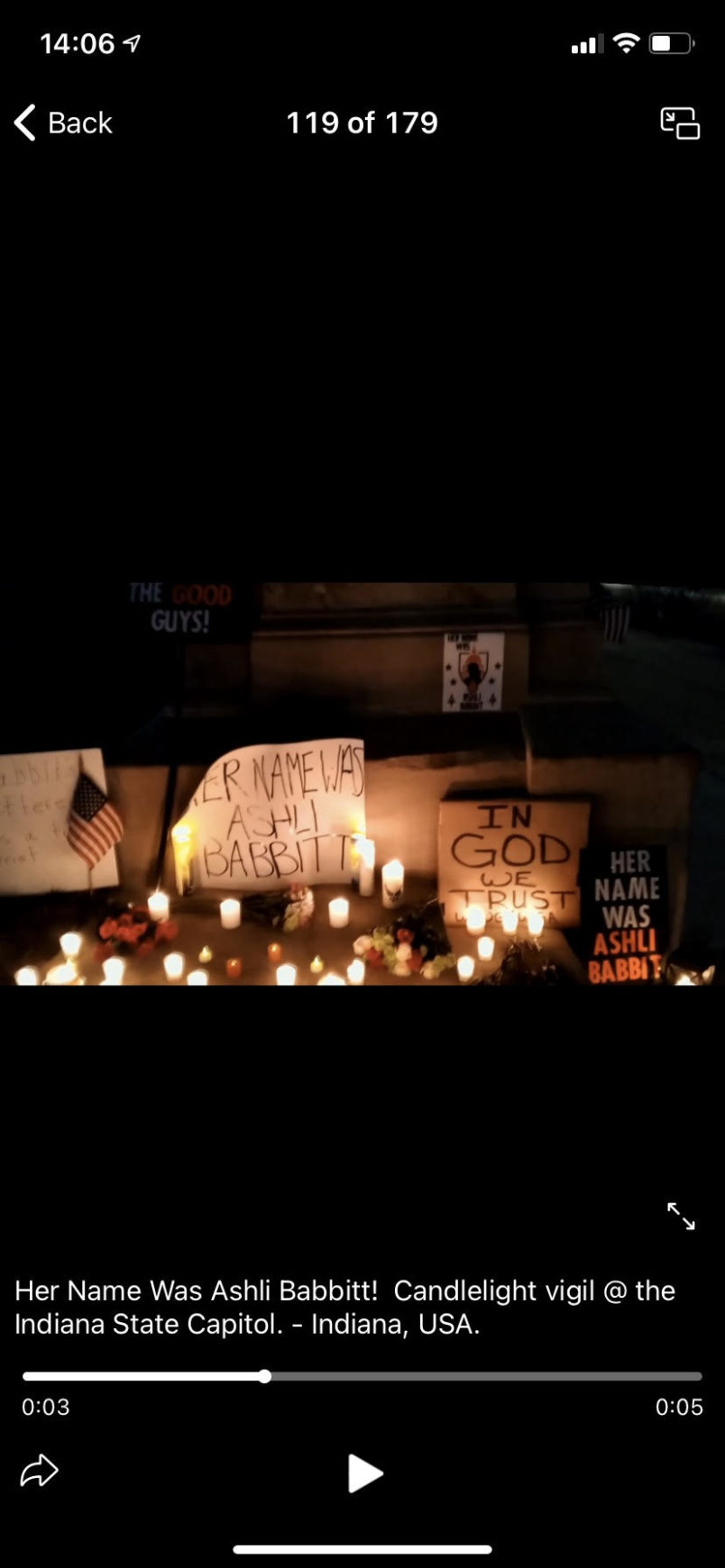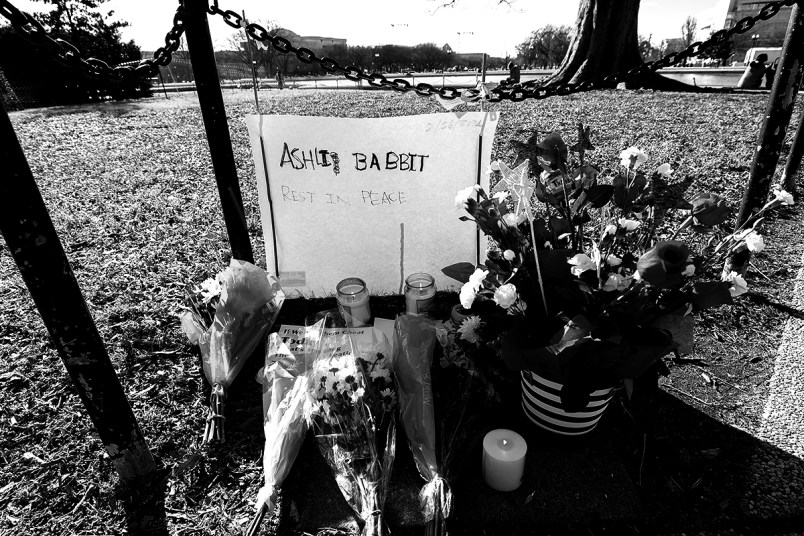“Her name was Ashli Babbitt.”
That’s the refrain that echoed across forums used by the right-wing fringe in the late hours of Jan. 6 and in the weeks after she was shot while attempting to breach a final hallway on the other side of which members of Congress were sheltering.
The rallying cry came within hours of the shooting, as her San Diego family identified her to local news outlets, and after people on the scene tweeted videos of the chaos.
Babbitt’s death set off an immediate firestorm that was, at first, limited to the fringes, including the QAnon faithful, white supremacists, and anti-government extremists. But over the past six months, as memories of the insurrection fade, that initial reaction to the shooting as an example of federal tyranny has been adopted by Trump and his acolytes.
“Using Ashli Babbitt, you can recast the events of that day,” Alex Friedfield, an investigative researcher at the Anti-Defamation League’s Center on Extremism, told TPM. “Instead of it being a violent uprising to overthrown the election, it’s now a story about this unarmed innocent woman who was murdered by government aggression.”
Trump cast it that way in remarks to a crowd Wednesday.
“There were no guns in the Capitol, except for the gun that shot Ashli Babbitt,” Trump said, adding later: “Just boom — there was no reason for that.”
Terrell Roberts III, an attorney for the Babbitts, declined to comment beyond saying that Ashli and her family were “victims” when asked about Trump’s involvement and the case.
Martyrdom
Babbitt was shot as she climbed through a doorway to the Speaker’s Gallery, on the other side of which members of Congress were still evacuating.

It was arguably a high-water mark of the insurrection, one of the few, key moments at which the mob of rioters seeking to overturn the results of the 2020 election got within striking distance of elected officials.
Almost immediately, a mix of conspiracy theorists, white supremacists and anti-government extremists began to treat her death as an example of tyranny. Andrew Anglin, who the Southern Poverty Law Center describes as the “founder of the Neo-Nazi Daily Stormer website,” wrote a Jan. 7 column in which he wrote that “she is dead for literally no reason.”

To Anglin, an avowed white supremacist, her death was partly an example of so-called advantages given to minorities who die as a result of state violence.
“[The officer who shot Babbitt]’s face should be plastered everywhere, and he should be dragged out before the public just like Derek Chauvin,” Anglin wrote in the Jan. 7 column.
Extremists of the more anti-government stripe saw it as an example of supposed tyranny. Within days of her death, for example, far-right Telegram accounts and chats began to post images of supposed shrines to her around the country.
One account, called Revolt Through Tradition, posted on Jan. 9 and Jan. 10 a series of photos showing posters supposedly put up with Babbitt’s name in Florida and New Hampshire.
It also posted a brief video of a shrine in Babbitt’s name outside of the Indiana state capitol.
All of this came as many feared that further, Jan. 6-style attacks could come at state legislatures or other government buildings around the country. Organizers of a supposed “Million Martyr March” or “Million Militia March” tried to use her likeness to promote a Jan. 20 march on Washington, but that fizzled.
At the time, outrage over her death was consigned to the fringes. It was only extremists without any real access to mainstream media outlets that portrayed her death as a grave injustice in the days after the attack.
Away from the fringe
But recent weeks have seen former president Trump, and politicians and influencers aligned with him, take up Babbitt as a theme. He has begun to issue statements demanding that the identity of the officer who shot her be released. On Wednesday, he told a crowd in New Jersey that “there was no reason for that,” referring to the shooting.
Rep. Paul Gosar (R-AZ) put out a statement adopted similar framing. “Six months ago today, Ashli Babbitt, a 110-pound woman with nothing in her hands, not a rock, not a stick or a bat, was shot dead by a still unknown Capitol Hill police officer,” Gosar (R-AZ) said Tuesday.
Gosar, who openly associates with far-right figures, has been pushing this narrative for months. During hearings held to investigate security lapses on Jan. 6, Gosar has asked former federal officials to name the officer “who executed Ashli Babbitt.”
“It is unjust to sweep Ashli’s death under the rug by merely saying she was in the wrong place at the wrong time, as so many have,” Gosar added in the Tuesday statement, in which he welcomed Trump’s support.
Others around Trump have done the same. Former lawyer Rudy Giuliani has suggested that “there must be something wrong” with the shooting.
If the Democrats and Crooked Media are ignoring the ONLY shooting in the Capitol on Jan. 6th, there must be something wrong with it.
— Rudy W. Giuliani (@RudyGiuliani) July 8, 2021
Friedfield argued that the setting and circumstances of the shooting — and videos that captured it — conveyed an almost allegorical meaning to both white supremacists and anti-government extremists. Here was an average, small white woman climbing through a door on the other side of which sat the government. Crossing that boundary led to her swift death.
“It fits into the narrative that this is a war,” Friedfield told TPM. “Here’s what happens when you stand up against tyranny — the government kills you.”






